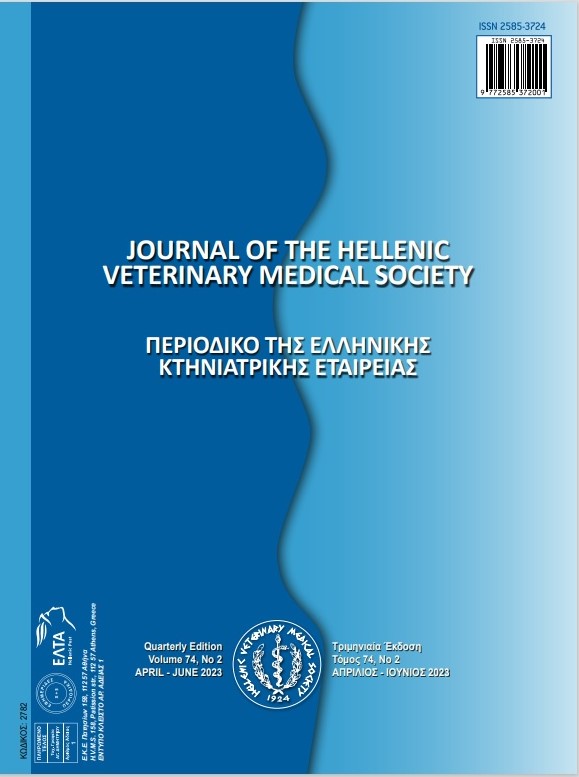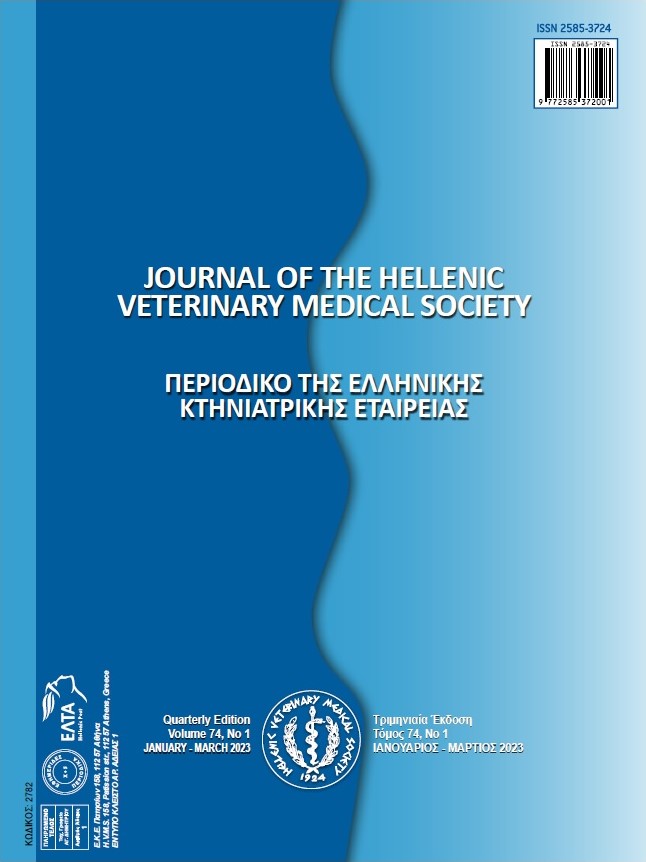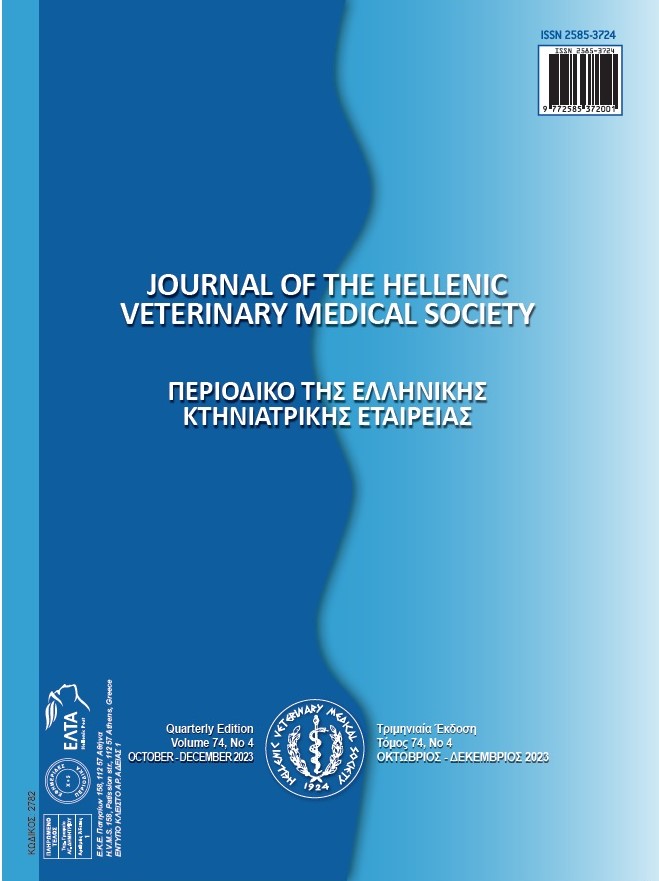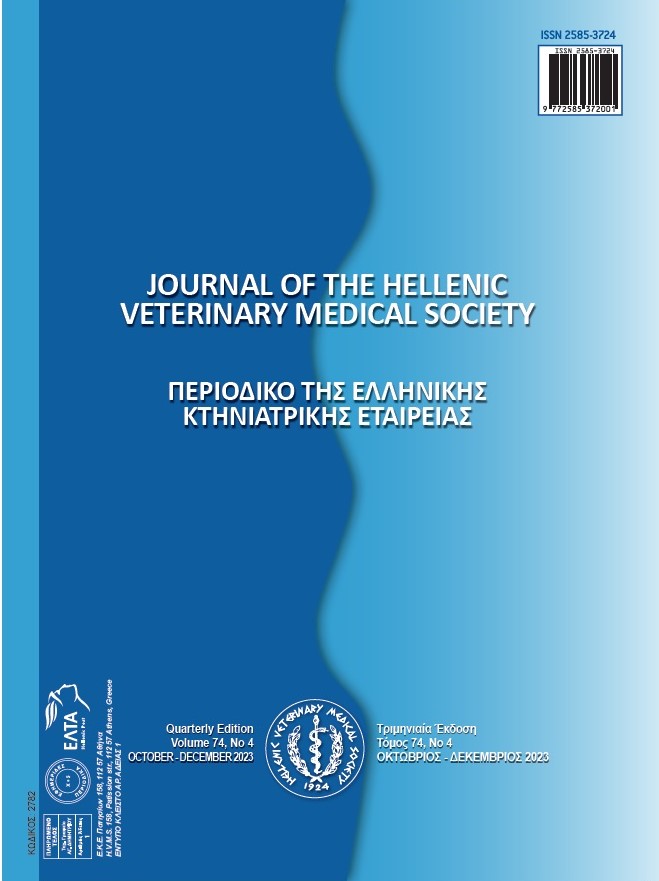A myocutaneous flap variation for management of distal hindlimb wounds in the cat

Abstract
Management of complex feline hindlimb defects is challenging. However, the use of a split semitendinosus myocutaneous (SST) flap for coverage has not yet been reported. The objective of this study was to describe the SST flap and compare it with second-intention healing for the management of complex tibial defects in cats.
Two wounds were created on each tibia of 12 purpose-bred laboratory DSH cats. Wounds in group A (n=12) were covered with SST flaps and those in group B (n=12) were left to heal by second intention. In both groups, clinical assessment scoring and planimetry were performed between 1 and 30 postoperative days. CT angiography (CTA) and histological examination were performed on days 0, 10, and 30 and on days 0, 14, 6, and 12 months postoperatively, respectively. Group A had significantly higher assessment scores on days 7 (p=0.002), 14 (p<0.001), 21 (p=0.001), and 30 (p=0.008). The time to complete healing in group A (32,42 days) was significantly higher than that to complete epithelial coverage in group B (24.67 days) (p=0.001). On CTA, significant differences were observed in ST muscle density which was higher on day 10 compared to 0 on the proximal (dP) (p<0.001) and medial (dM) points (p=0,020, p<0,001, p<0,001 respectively) in all three different phases. For the distal (dD) point, the measurement was significantly higher in the precontrast phase (p=0.001) and on day 10 compared today 30 atn all points in all three phases (p<0.001). The caliber of the distal caudal femoral artery and vein and of the proximal gluteal artery and vein were significantly higher on day 10 than on day 0 (p<0.001), on days 10 to 30 (p<0.001), and on days 30 to 0 (p=0.004, p=0.006, p=0.011, p=0.007, respectively). Histologically significant differences were observed on inflammation and muscle cell degeneration which were higher on day 14 than on day 0 and 6 months (p<0.001, p<0.001, p<0.001, p=0.007 respectively). Neovascularization and fibrosis were significantly higher on day 14 than on day 0 (p=0.010 and p=0.009, respectively). In conclusion, although the ST muscle can be safely longitudinally split and cover tibial defects, the SST flap is less efficient than second-intention healing in terms of the time to complete wound healing.
Article Details
- How to Cite
-
Dermisiadou, E., Panopoulos, I., Psalla, D., Georgiou, S., Sideri, A., Galatos, A., Flouraki, E., & Tsioli, V. (2025). A myocutaneous flap variation for management of distal hindlimb wounds in the cat. Journal of the Hellenic Veterinary Medical Society, 75(4), 8343–8352. https://doi.org/10.12681/jhvms.37044
- Issue
- Vol. 75 No. 4 (2024)
- Section
- Research Articles

This work is licensed under a Creative Commons Attribution-NonCommercial 4.0 International License.
Authors who publish with this journal agree to the following terms:
· Authors retain copyright and grant the journal right of first publication with the work simultaneously licensed under a Creative Commons Attribution Non-Commercial License that allows others to share the work with an acknowledgement of the work's authorship and initial publication in this journal.
· Authors are able to enter into separate, additional contractual arrangements for the non-exclusive distribution of the journal's published version of the work (e.g. post it to an institutional repository or publish it in a book), with an acknowledgement of its initial publication in this journal.
· Authors are permitted and encouraged to post their work online (preferably in institutional repositories or on their website) prior to and during the submission process, as it can lead to productive exchanges, as well as earlier and greater citation of published work.






